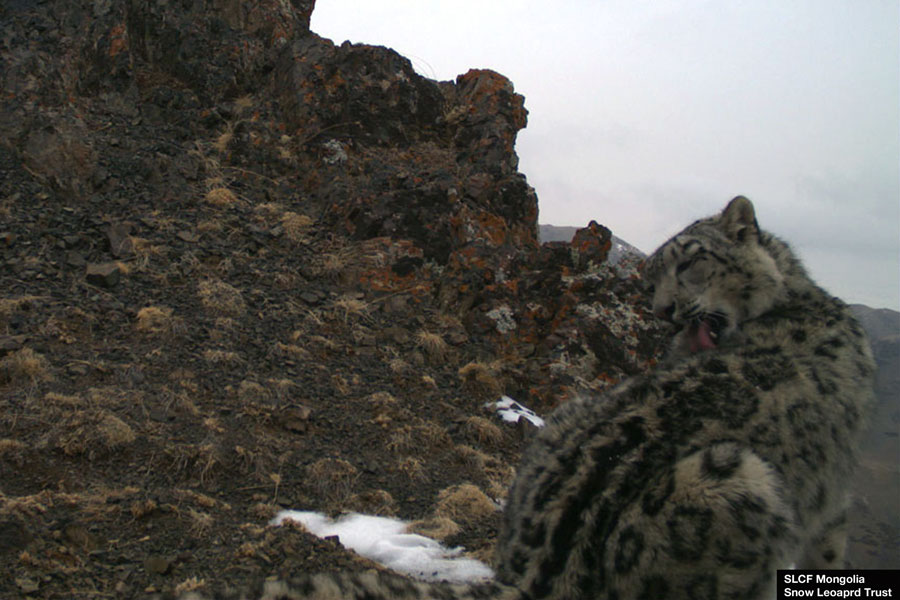New Territory for Long-Term Study in Mongolia
A 1,500-square-kilometer area of Mongolia’s Gurvansaikhan Mountains is home to multiple snow leopards and young, according to a first glance at photographs from last spring’s research cameras.
Expanding into Gurvansaikhan has effectively tripled the area we’re able to survey as part of our long-term snow leopard study in Mongolia’s South Gobi province, to a total of 4.500 square kilometers.
When we started our long-term study, we focused on a core area of 1,500 square kilometers in the Tost-Tosonbumba Mountains. The snow leopard population there was thought to be isolated due to the flat, open steppe that surrounded the mountain range. But data from satellite tracking collars and research cameras soon showed three snow leopards crossing wide stretches of inhospitable landscape and migrating to neighboring mountain ranges.
So now we are doing camera surveys in multiple mountain ranges to estimate snow leopard populations, study population trends, and look for evidence of snow leopard migration.
In 2013, we expanded our camera surveys north into the Nemegt Mountains and east into the Noyon range. Last year, the invaluable help of local rangers and biologists who made it possible for us to set up and retrieve cameras in record time meant that we could place 34 cameras in Gurvansaikhan as well.
When we retrieve the cameras from a new area like Gurvansaikhan we are particularly excited to look at the photographs. How many individual snow leopards will we see? Will there be mothers with young? Will we recognize any cats from other areas? Thus far, we know they include at least one family (see photo). With further analysis, we hope to find some “old friends” from Tost among the Gurvansaikhan snow leopard photographs, too.
Our long-term study is a joint project of Snow Leopard Trust and Snow Leopard Conservation Foundation in cooperation with the Mongolia Ministry of Nature, Environmental and Tourism, and the Mongolia Academy of Sciences.
Expanding into Gurvansaikhan has effectively tripled the area we’re able to survey as part of our long-term snow leopard study in Mongolia’s South Gobi province, to a total of 4.500 square kilometers.
When we started our long-term study, we focused on a core area of 1,500 square kilometers in the Tost-Tosonbumba Mountains. The snow leopard population there was thought to be isolated due to the flat, open steppe that surrounded the mountain range. But data from satellite tracking collars and research cameras soon showed three snow leopards crossing wide stretches of inhospitable landscape and migrating to neighboring mountain ranges.
So now we are doing camera surveys in multiple mountain ranges to estimate snow leopard populations, study population trends, and look for evidence of snow leopard migration.
In 2013, we expanded our camera surveys north into the Nemegt Mountains and east into the Noyon range. Last year, the invaluable help of local rangers and biologists who made it possible for us to set up and retrieve cameras in record time meant that we could place 34 cameras in Gurvansaikhan as well.
When we retrieve the cameras from a new area like Gurvansaikhan we are particularly excited to look at the photographs. How many individual snow leopards will we see? Will there be mothers with young? Will we recognize any cats from other areas? Thus far, we know they include at least one family (see photo). With further analysis, we hope to find some “old friends” from Tost among the Gurvansaikhan snow leopard photographs, too.
Our long-term study is a joint project of Snow Leopard Trust and Snow Leopard Conservation Foundation in cooperation with the Mongolia Ministry of Nature, Environmental and Tourism, and the Mongolia Academy of Sciences.

Comments
Post a Comment